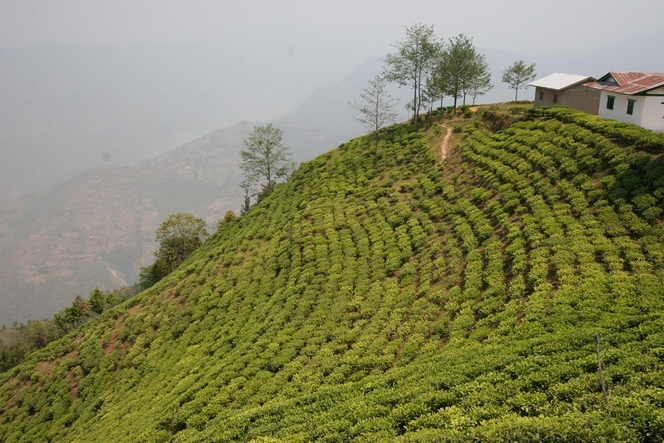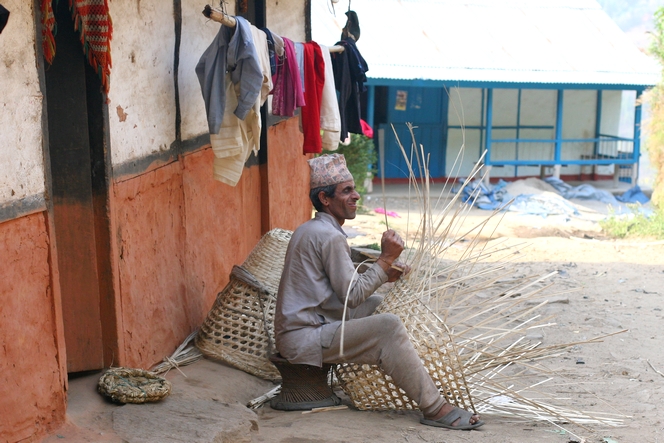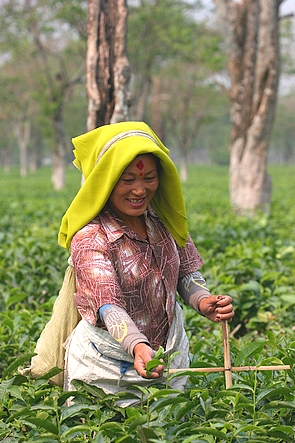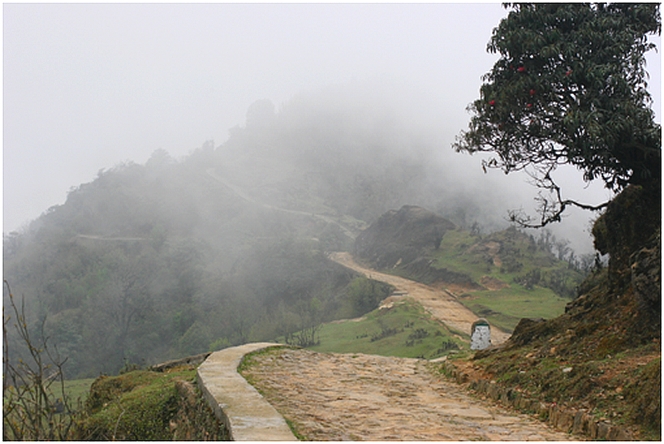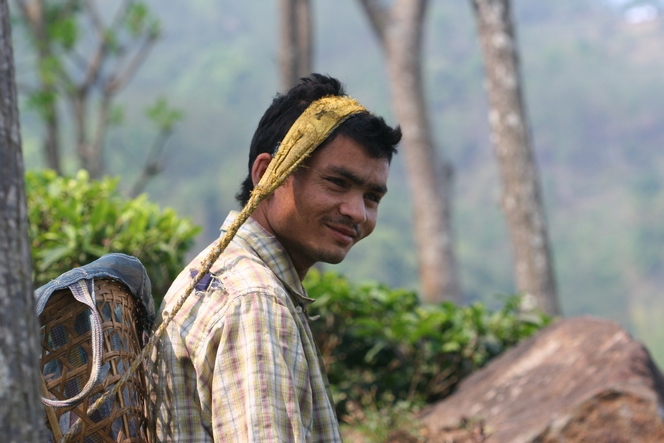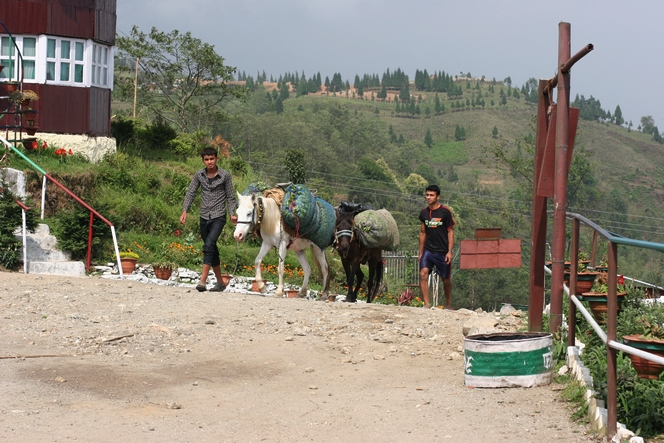Plucking tea, practically leaf by leaf, is a major undertaking. In some countries, pickers carry baskets on their backs to hold the leaves. These baskets have an open weave to allow the air to circulate inside and prevent the leaves from fermenting, which would spoil the pickers’ hard work.
There are several clues to the fact that I took this photo in Nepal: the man’s attire, particularly his hat, which is the kind worn by many Nepalese; the house with its ochre finish halfway up the mud walls, and the white sections picked out by the darker lines; lastly, for those who’ve spent time on the tea plantations, the shape of the basket itself, which becomes square as it widens at the top, and exists only in this region.
This scene took place near Phidim, in the far north of Ilam Valley, in the easternmost part of Nepal (Kanchenjunga Tea Estate is nearby; the Nepal Green Tea Factory and the Himalayan Shangri-La Tea Factory are a little further away).
Nepal remains a largely rural country. Here, two hours’ walk from the nearest village, people obviously need to do everything for themselves. They weave in front of their homes, without becoming distracted by the stranger taking photos of them.

